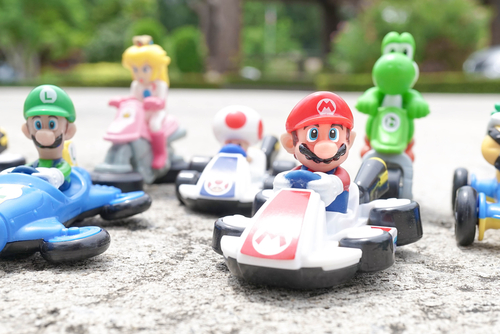
These days, motivating a sales team takes a lot of creativity.
The old commission or bonus system isn’t the best way to motivate anymore — it can actually hurt employee engagement. Capped commissions can make workers less driven after hitting their targets, and cash bonuses may demotivate teams that don’t meet their sales goals. Changing yearly quotas or benchmarks can seem unfair to top performers and lead to tension in the team.
A recent Gallup poll shows that only 13 percent of employees feel engaged at work, while 49.5 percent don’t feel engaged, and 16.6 percent are actively disengaged. This disengagement can lead to higher turnover, costing U.S. companies $11 billion each year.
Instead of relying on age-old tactics, companies must look to new approaches to motivate their sales teams and drive performance and employee engagement.
The Mario Kart Approach
When it came time to inspire my own sales team and rally them around something besides cash, I looked to an unusual source of inspiration: the video game “Mario Kart.”
I aimed to design a fun game that got everyone involved — some even dressed up as Mario and Luigi. To kick things off, we gave each sales team member three balloons, just like in the real game. For every sale over a $1,000 account deposit, an employee could pop a balloon from the team member they picked. At the end of the week, the person with the most balloons left was the winner.
Employees were also allowed to steal balloons when they made sales with deposits of more than $2,000, so employees who lost all their balloons early in the game were motivated to make difficult sales and get back in the competition.
Although our two sales teams typically remain siloed, the game brought everyone together into one big, collaborative team. Some employees even made alliances across teams to eliminate other team members’ balloons, increasing unity and driving bigger sales.
Strategies for Motivating a Sales Force
Our “Mario Kart” initiative motivated employees to try harder in their sales approaches by not settling for a “no” or a small deposit. The game brought camaraderie, competition, and excitement to the team. Here are three strategies to help your company take a similarly creative approach to employee engagement:
1. Figure out what truly motivates your team.
As my team discovered, sometimes fun initiatives can outweigh financial incentives. After the initiative concluded, our employees reported valuing the game over a cash bonus because it increased their engagement during the workday.
We also have a culture team that stays in tune with employees and constantly reevaluates and identifies what truly motivates them. As we have seen over time, you may need to shift priorities: What motivated someone five years ago may not matter today.
2. Find unique ways to financially empower employees.
Writing a check may seem like the simplest path to financial empowerment, but helping employees with long-term financial wellness is a better option.
For example, we planned a financial wellness program after learning that many of our employees are burdened with student debt. The weeklong program brought in experts to discuss relevant financial topics such as taxes, mortgages, student debt repayment, and college savings plans. Because the bulk of our staff is relatively young, we want to set employees up for lifelong financial well-being.
3. Try out new motivation tactics.
No one-size-fits-all approach to motivating employees exists. Money may seem like the ultimate motivator, but until you try something else, you won’t know what truly incentivizes your employees.
The “Mario Kart” game worked especially well for us because of our primarily young employee base, many of whom grew up playing the game. By tapping into something that brought them joy, we escaped the trite cash cycle and brought more engagement and fun to the workplace.
Determining how to motivate a group takes constant trial and error, communication, and effort. Remember that it’s OK to think outside the box. What creative techniques have you tried?